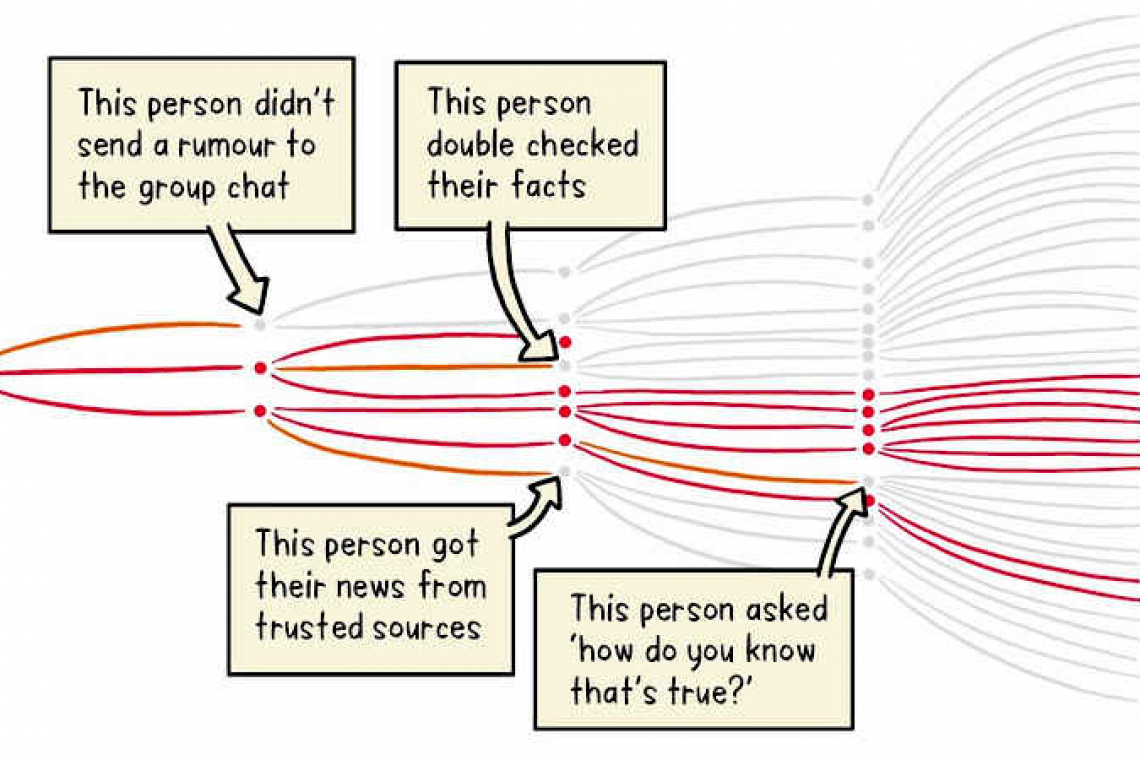Being able to stop and think about that WhatsApp message or Facebook post before sharing is incredibly important if you don’t want to be part of the problem of spreading misinformation. Parallel to the global spread of COVID-19 has been an unbelievably hard to tame spread of unreliable information, be it unintentional misinformation, or intentional disinformation. This had led to what has been dubbed an “infodemic”.
In confusing and turbulent times, with more time spent online, and research ever-emerging about a new and highly contagious disease, everyone is looking for answers and patterns, and urgently sharing findings with family, friends, or via social media.
Here are some top tips to help navigate a sea of information.
Assess the source.
Who shared the information with you; and where did they get it from? Even if it is friends or family, you still need to vet their source. To check for fake social media accounts, look at how long their profiles have been active, their number of followers and their most recent posts. For websites, check the “About Us” and “Contact Us” pages to look for background information and legitimate contact details.
When it comes to images or videos, make it a habit to verify their authenticity. For images, you can use reverse image search tools provided by Google and TinEye. For videos, you can use Amnesty International's YouTube DatViewer, which extracts thumbnails that you can enter into reverse image search tools.
Other clues that a source may be unreliable or inaccurate include unprofessional visual design, poor spelling and grammar, or excessive use of all caps or exclamation points.
Go beyond headlines.
Headlines may be intentionally sensational or provocative to get high numbers of clicks. Read more than just the headline of an article – go further and look at the entire story. Search more widely than social media for information – look at print sources such as newspapers and magazines, and digital sources such as podcasts and online news sites. Diversifying your sources allows you to get a better picture of what is or is not trustworthy.
Identify the author.
Search the author’s name online to see if they are real or credible.
Check the date.
When you come across information, ask yourself these questions: Is this a recent story? Is it up to date and relevant to current events? Has a headline, image or statistic been used out of context?
Examine the supporting evidence.
Credible stories back up their claims with facts – for example, quotes from experts or links to statistics or studies. Verify that experts are reliable and that links actually support the story.
Check your biases.
We all have biases, and these factor into how we view what’s happening around us. Evaluate your own biases and why you may have been drawn to a particular headline or story. What is your interpretation of it? Why did you react to it that way? Does it challenge your assumptions or tell you what you want to hear? What did you learn about yourself from your interpretation or reaction?
Turn to fact-checkers.
When in doubt, consult trusted fact-checking organizations, such as the International Fact-Checking Network and global news outlets focused on debunking misinformation, including the Associated Press and Reuters.
These tips were adapted from The Spinoff, and shared via the World Health Organization (WHO). Graphic: WHO.







